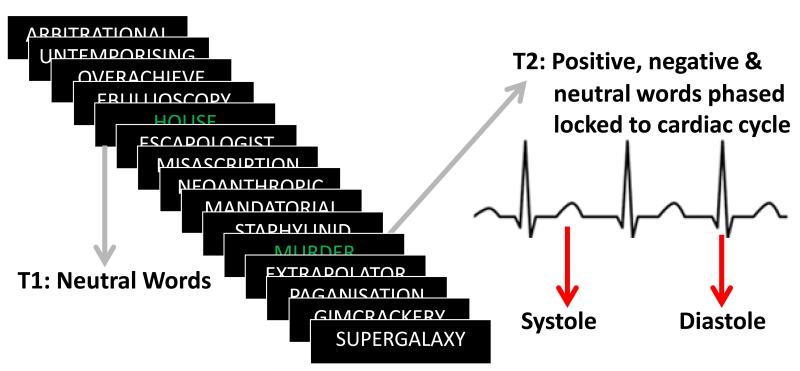Figure 1.
Emotional attentional blink task with cardiac timing. Each RSVP consisted of 15 items, 13 were long distractor words presented in white, and two were target words (T1 and T2) presented in green. T1 was a neutral word, and was always presented first in order to enhance the masking of T2. T2 was the stimulus of interest, and was either a neutral (e.g. fence), positive (e.g. happy) or negative (e.g. murder) word. T2 was time-locked to either the R wave (diastole) or T wave (systole). Detection of T2 served as the variable of interest for attention (as determined on a trial-by-trial basis). Memory for T2 items was assessed at the end of the experiment using free recall.

